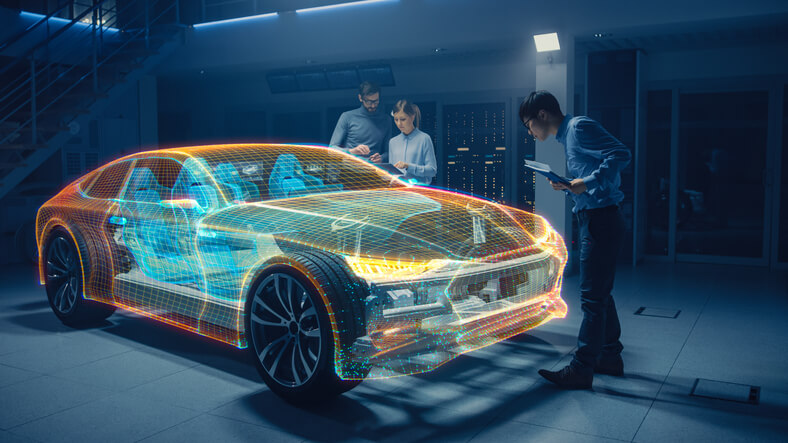Understanding Augmented Reality in Automotive Technology
Augmented reality (AR) is revolutionizing automotive training and the industry. AR enhances vehicle design, manufacturing, and user experiences, becoming essential in modern automotive technology. This blog explores AR’s impact and its potential to shape the future of driving.
What Is Augmented Reality?
Augmented reality (AR) is a technology that overlays digital information, such as images, videos, or 3D models, onto the real-world environment. Unlike virtual reality (VR), which creates a completely simulated environment, AR enhances the real world by adding interactive elements.
In the context of automotive technology, AR can provide drivers and passengers with real-time information, guidance, and interactive experiences that enhance both safety and convenience.
Applications of Augmented Reality in Automotive Technology
The integration of AR in automotive technology is transforming the industry, improving everything from manufacturing and maintenance to driver experience and safety. Here are some of the key applications:
1. AR in Heads-up Displays (HUDs)
One key use of augmented reality in the automotive sector is heads-up displays (HUDs). Traditionally, HUDs projected basic information like speed and fuel levels onto the windshield. With AR, these displays now offer much more. Modern AR-HUDs project navigation onto the road, highlighting hazards, indicating turns, and street names within the real-world view.
This technology keeps drivers focused on the road, enhancing safety by reducing distractions. For instance, an AR-HUD can highlight pedestrians or alert the driver to sudden obstacles, improving reaction times and overall road safety.

2. AR in Navigation Systems
In automotive training, AR revolutionizes navigation by projecting real-time directions onto the driver’s perception of the road, reducing confusion and ensuring accurate route following, especially in complex intersections.
Additionally, AR displays nearby points of interest, like restaurants and gas stations, directly in the driver’s view, enhancing convenience and making the driving experience more intuitive.
3. AR in Vehicle Design and Manufacturing
Augmented reality plays a significant role in vehicle design and manufacturing. Designers and engineers use AR to visualize complex components, overlaying digital models onto physical prototypes to identify potential design flaws or improvements. This capability speeds up the design process, reduces costs, and allows for more innovative vehicle designs.
In manufacturing, AR aids technicians in assembling and repairing vehicles by providing real-time, step-by-step guidance. For example, technicians can use AR glasses to see overlay instructions and diagrams directly on the vehicle component they are working on, minimizing errors and improving efficiency.

4. AR for Enhanced Customer Experience
Automotive companies leverage AR to enhance the customer experience in showrooms and after the purchase. In showrooms, customers can use AR applications to visualize different car models, colours, and features without needing physical access to every variant. This interactive experience helps customers make more informed decisions and adds a layer of personalization to the buying process.
Post-purchase AR applications can assist customers with vehicle maintenance and troubleshooting. For instance, an AR app can guide a car owner through basic repairs or maintenance tasks, such as changing a tire or checking engine oil, by overlaying instructions onto the real-world view of the vehicle.
The Future of Augmented Reality in Automotive Technology
The future of AR in automotive technology is promising, with advancements pushing the limits of what’s possible. We can expect more sophisticated AR systems in vehicles, enhancing safety, navigation, and the driving experience. As autonomous vehicles become more common, AR will play a key role in bridging human drivers and AI, providing crucial information.
With the spread of 5G, AR capabilities in vehicles will expand, enabling faster, more reliable data transmission. This will allow for more complex applications like real-time hazard detection, lane departure warnings, and AR-enhanced vehicle communication.
Are you looking for comprehensive automotive technology training?
Contact ATC Cambridge for more information.


